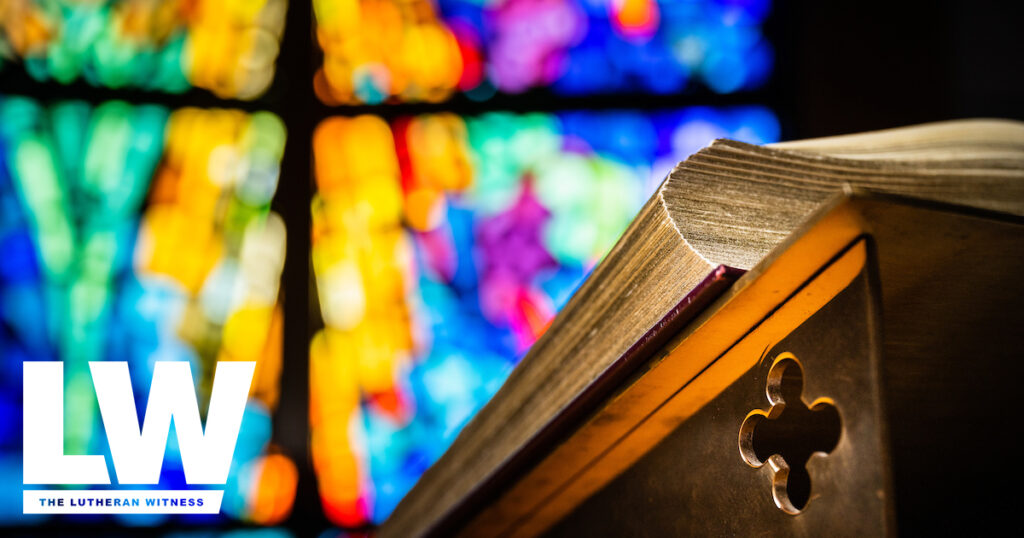by William D. Cochran
Q. How have LCMS schools grown over the last 40 years?
A. There has been a steady growth in the total number of Lutheran schools, which peaked at 2,525 schools in 2006. That includes a significant growth in the number of free-standing early childhood centers, which reached a high of 1,406 in 2009. In addition, there has been growth in the number of Lutheran high schools to a high of 108 in 2009. During the last three years, the economy has had an impact on the number of elementary schools. The church has lost over 100.
Q. How many students are currently enrolled in school?
A. The 2010–2011 school year saw 243,212 students enrolled in all Lutheran schools. That number includes 128,351 enrolled in early childhood programs, 98,213 enrolled in grades K–8 and 16,648 students enrolled in Lutheran high schools.
Q. How many schools are currently in existence?
A. There are currently 2,382 Lutheran schools in the United States. That number breaks down to 1,393 free-standing early childhood centers, 899 pre-K–8 schools and 90 Lutheran high schools.
Q. How many teachers are there?
A. There are about 16,000 teachers serving the 2,382 Lutheran schools. That number includes both full- and part-time teachers.
Q. What is the number of rostered teachers?
A. Of the 16,000 teachers in Lutheran schools, 6,000 of those are on the roster of The Lutheran Church—Missouri Synod. An additional 3,800 are non-rostered Lutheran teachers.
Q. What is the average teacher’s salary?
A. The average starting salary for a first-year teacher in a Lutheran elementary school in 2010 was $28,800. For an experienced teacher with a bachelor’s degree serving in an elementary school, the average salary is $32,167. The average starting salary for a Lutheran high school teacher in 2010 was $29,000 with the average for all high school teachers with a bachelor’s degree being $37,855.
Q. What makes the LCMS parochial school system unique?
A. The Lutheran Church—Missouri Synod operates the largest, single-denomination, non-Catholic, Christian school system in the United States. While those numbers have declined in the past decade due to demographic and financial issues, the church has been able to maintain and enhance the quality of her school system. The large schools are getting larger, and many are becoming the school of choice in their neighborhoods.
Average cost per pupil
Early childhood centers — $2,909
Elementary school — $6,024
High school — $9,960
Average number of attendees
Early childhood center — 48
Elementary school — 110
High school — 187
Ethnicity of students in LCMS schools
Caucasian — 82 percent
Black — 7 percent
Hispanic — 5 percent
Asian — 3 percent
Other — 3 percent
Student–church affiliation
LCMS operating congregation — 39 percent
Non-Lutheran church — 36 percent
Un-churched — 17 percent
Other LCMS congregation — 5 percent
Other Lutheran church — 3 percent
Top five schools by enrollment
Faith Lutheran—Las Vegas, Nev.
Lutheran High of Orange—Orange, Calif.
Prince of Peace Christian—Carollton, Texas
Rockford Lutheran—Rockford, Ill.
St. John’s Lutheran—Orange, Calif.
—
About the Author: William D. Cochran is the Synod’s director of school ministry.
Historical Foundations in Lutheran Education
by Susan Mobley
[Martin] Luther [and his co-worker Philipp] Melancthon developed the principles that underlay the Evangelical educational reforms of the sixteenth century, and their ideas still inform Lutheran education today. Although Luther was the leader of the education reforms at Wittenberg in 1518 and had a very clear vision of the purpose and content of education, he was not the primary force in the reform of education in sixteenth-century Germany. When Luther became preoccupied with religious affairs after 1518, Melancthon assumed the leadership of education reform, and was so influential that his contemporaries dubbed him praeceptor Germanieae, or “teacher of Germany.”
Melancthon stressed the importance of . . . subjects, such as language, rhetoric, history, dialectic, and poetry, but he also emphasized the value of moral philosophy, natural philosophy, and mathematics (especially arithmetic, geometry, and astronomy). All of these subjects led students to a greater understanding of God’s creation, and thus indirectly to a greater understanding of divine will, of God’s law. Such understanding could not but help students to develop a greater insight into the condition of man, which would lead them to the Gospel.
Lutheran education has proved its worth over the centuries. Lutheran education retains the Scriptures at its heart, but also teaches students about the world in which they live. Lutheran education today still makes a connection between faith and learning, a connection that Luther and Melancthon instilled in education. An active faith is an educated one; learning should help students to build character as well as to develop knowledge and skills; to serve well in the world, Christians need to know something about the world and its people. These were worthy goals in the sixteenth century. They remain worthy goals in the twenty-first century. Thus, the mission of Lutheran education in the twenty-first century is . . . the same as it was in the sixteenth century: to help students to develop in mind, body and spirit for service to Christ in the Church and in the world.
By Susan Mobley, “Historical Foundations in the Lutheran Reformation, in Learning at the Foot of the Cross: A Lutheran Vision for Education, ed. Joel D. Heck and Angus J. L. Menuge (Austin: Concordia University Press, 2011).
To order this new resource on Lutheran education, go to www.concordia.edu and search for “Concordia University Press.”
—
> 59 percent of LCMS congregations operate schools and centers.
> In the 2010–2011 school year, 36,556 students are enrolled in before- or after-school care.
> The fear of the Lord is the beginning of knowledge (Prov. 1:7).
May 2011



